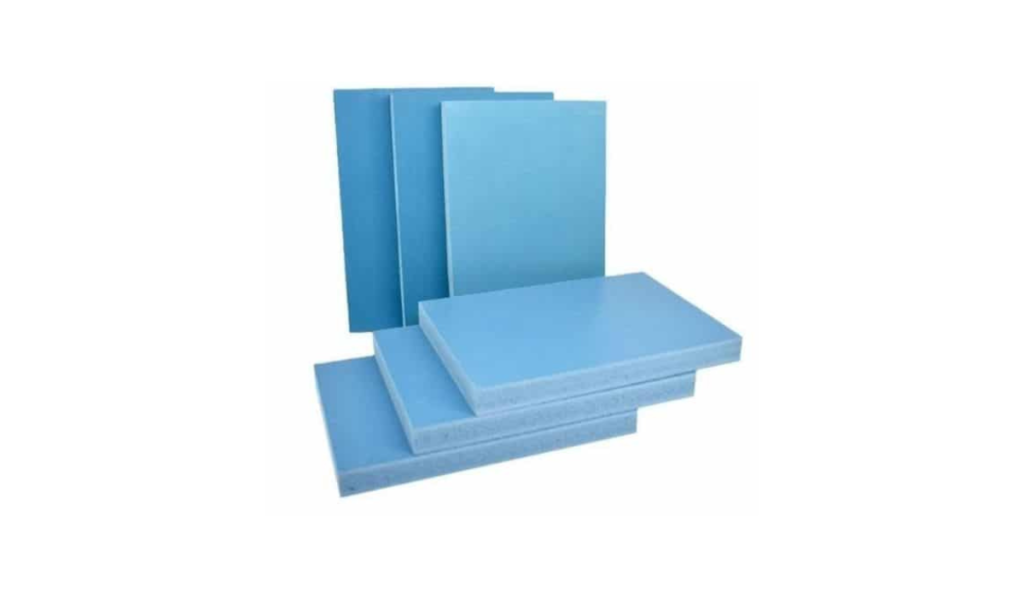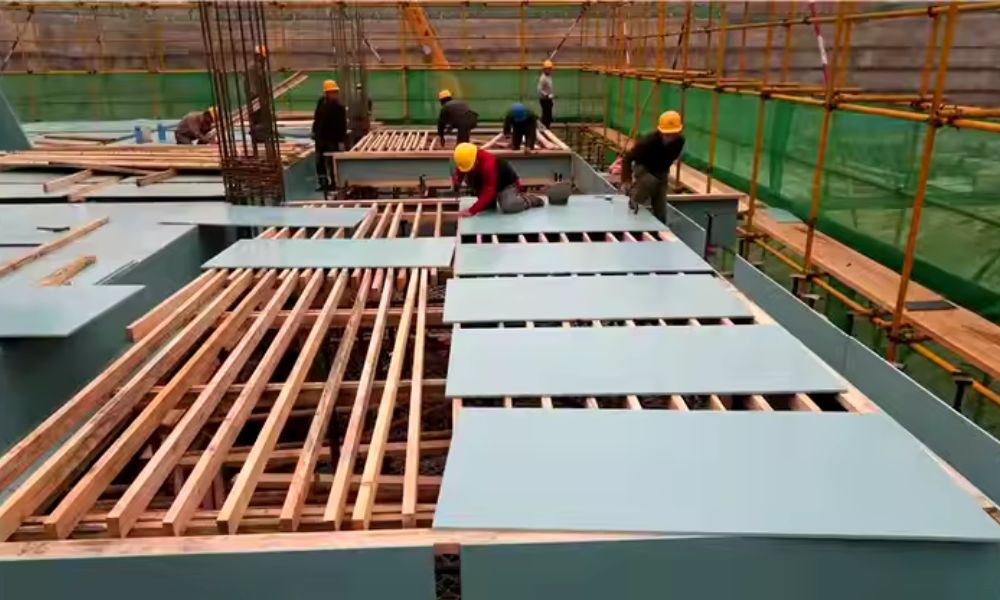Last updated on October 19th, 2024 at 03:22 am
In the construction industry, safety is always a top priority. With workers handling heavy equipment, materials, and machinery, ensuring a safe work environment is critical to the success of any project. One area that significantly impacts site safety is the choice of formwork materials.
Traditional materials like steel, timber, and plywood have been used for decades, but they come with inherent safety risks. Enter plastic formwork—a lightweight, durable, and reusable solution that has gained popularity for its safety benefits in construction.
In this blog, we will explore why plastic formwork is considered one of the safest choices for construction sites, detailing its advantages over traditional materials. We’ll cover how it reduces common on-site hazards, improves worker safety, and contributes to a more efficient work environment.
By the end, you’ll understand why plastic formwork is the safest bet for your construction project and why you should request a free sample to experience these benefits for yourself.
Understanding the Role of Formwork in Construction Safety
Formwork is an essential part of the construction process, serving as the temporary mold used to shape and support concrete until it hardens. The type of formwork material you choose can have a direct impact on both the safety of your workers and the overall efficiency of the project.
Traditional materials such as timber, plywood, and steel each have their own set of challenges when it comes to safety. Timber and plywood can splinter or degrade over time, posing risks to workers, while steel is heavy and often requires the use of machinery to handle, increasing the chances of accidents.
In contrast, plastic formwork offers a safer, more reliable alternative, helping to mitigate risks and improve safety on construction site
Key Safety Advantages of Plastic Formwork
Plastic formwork is becoming the preferred choice for contractors who prioritize safety on their job sites. Its unique properties provide several key safety advantages over traditional materials:
Lightweight and Easy to Handle
One of the primary safety benefits of plastic formwork is its lightweight design. Unlike steel or timber formwork, which can be heavy and difficult to maneuver, plastic formwork is lightweight, making it easier for workers to handle without the need for heavy lifting equipment.
Why this Improves Safety:
Reduces Strain on Workers: The lightweight nature of plastic formwork reduces the physical strain on workers, lowering the risk of muscle injuries, sprains, and strains. This is particularly important when formwork needs to be installed or removed multiple times throughout a project.
Less Machinery Required: Since plastic formwork is easier to move manually, it eliminates the need for heavy machinery, such as cranes or forklifts, which can introduce additional risks to the job site.
Safer Lifting and Transport: The reduced weight of plastic formwork means it can be lifted and transported by hand, reducing the risk of dropping or mishandling heavy loads that could injure workers or damage property.
By minimizing the need for machinery and lowering the physical demands on workers, plastic formwork helps create a safer, more manageable work environment.
No Risk of Splinters or Rust
Traditional timber formwork is prone to splintering, while steel formwork can rust or corrode over time. Both of these issues pose safety hazards for workers, as splinters can cause hand injuries and rusted steel can weaken, leading to structural failures.
How Plastic Formwork Avoids These Hazards:
No Splintering: Plastic formwork is made from durable, smooth materials that don’t splinter. Workers can handle the formwork without worrying about injuries from sharp edges or broken wood fibers.
Corrosion Resistance: Unlike steel, plastic formwork doesn’t rust or corrode when exposed to moisture or chemicals. This makes it a safer option for long-term use, particularly in wet or humid environments where steel formwork might degrade over time.
By eliminating the risks of splinters and corrosion, plastic formwork helps reduce the likelihood of injuries on-site and ensures that the formwork remains structurally sound throughout the project.
Fire Resistance and Non-Conductive Properties
Fire safety is a critical concern in construction, and the choice of materials can have a significant impact on fire risk. Traditional materials like timber are flammable, and steel, while non-flammable, can become extremely hot in the event of a fire, posing additional risks to workers.
Fire Safety Benefits of Plastic Formwork:
Fire-Resistant Materials: Many plastic formwork systems are made from fire-resistant materials, which reduces the risk of fire spreading on-site. This is especially important in large projects where multiple workers and materials are present, and any fire outbreak could have serious consequences.
Non-Conductive: Plastic formwork is also non-conductive, meaning it doesn’t conduct electricity like steel. This reduces the risk of electric shocks or electrical accidents, particularly in environments where electrical tools and wiring are in use.
These fire-resistant and non-conductive properties make plastic formwork a safer choice for projects where fire hazards or electrical risks are present.
Reduced Risk of Slips and Falls
Construction sites are full of hazards that can lead to slips, trips, and falls, which are among the most common causes of injuries in the industry. The materials used for formwork play a significant role in minimizing these risks.
Plastic Formwork’s Role in Preventing Slips and Falls:
Non-Slip Surfaces: Plastic formwork systems often feature non-slip surfaces, providing better traction for workers walking or working on them. This reduces the risk of slips, particularly in wet or muddy conditions.
Stable, Consistent Materials: Plastic formwork is designed to remain stable and consistent, even after multiple uses. In contrast, timber formwork can become warped, creating uneven surfaces that increase the likelihood of trips and falls.
By providing stable, slip-resistant surfaces, plastic formwork helps to create a safer working environment and reduces the risk of accidents on-site.
Faster Setup and Removal, Leading to Fewer On-Site Accidents
Efficiency is closely linked to safety in construction. The longer workers are on-site, the greater the likelihood of accidents occurring. Traditional formwork materials often require longer installation and removal times, which can expose workers to risks for extended periods.
How Plastic Formwork Improves Efficiency and Safety:
Quick Assembly and Disassembly: Plastic formwork’s modular design allows for quick assembly and disassembly. This means workers spend less time handling the formwork and are therefore exposed to fewer potential hazards.
Fewer Injuries During Setup: The lightweight nature of plastic formwork reduces the need for heavy lifting, decreasing the likelihood of injuries during setup and removal. This results in fewer incidents and a safer work environment overall.
By speeding up the installation and removal process, plastic formwork helps reduce on-site accidents and improves project safety while keeping the project on track.
Plastic Formwork vs. Traditional Materials: A Safety Comparison
To highlight the safety benefits of plastic formwork, let’s compare it to traditional materials like timber and steel:
| Safety Feature | Plastic Formwork | Timber Formwork | Steel Formwork |
| Weight | Lightweight, easy to handle | Heavier, more difficult to move | Heavy, requires machinery |
| Splinters/Rust | No risk of splinters or rust | Splintering is a common risk | Prone to rust and corrosion |
| Fire Resistance | Fire-resistant materials available | Flammable | Non-flammable but conductive |
| Slip Resistance | Non-slip surfaces | Slippery when wet | Can become slippery |
| Ease of Setup/Removal | Quick setup, reducing time on-site | Slower to install and remove | Requires more time and effort |
As this comparison shows, plastic formwork provides numerous safety advantages over traditional materials, making it a clear winner in terms of worker protection and overall site safety.
Cost Savings Through Enhanced Safety
Investing in plastic formwork not only enhances safety but also leads to significant cost savings in the long run. Fewer accidents on-site mean lower workers’ compensation costs, reduced downtime, and less damage to materials and equipment. Additionally, plastic formwork’s durability and reusability contribute to long-term savings by reducing the need for frequent replacements.
Plastic Formwork is the Safest Bet for Your Construction Site
When it comes to construction site safety, plastic formwork is the clear choice. Its lightweight design, non-slip surfaces, fire-resistant properties, and ease of handling make it the safest option for reducing on-site hazards and protecting workers. Whether you’re working on a small residential build or a large infrastructure project, plastic formwork ensures that your team can work efficiently while staying safe.
Ready to make safety a priority on your construction site? Request a free sample today or contact us to learn more about how plastic formwork can improve safety and efficiency on your next project.



